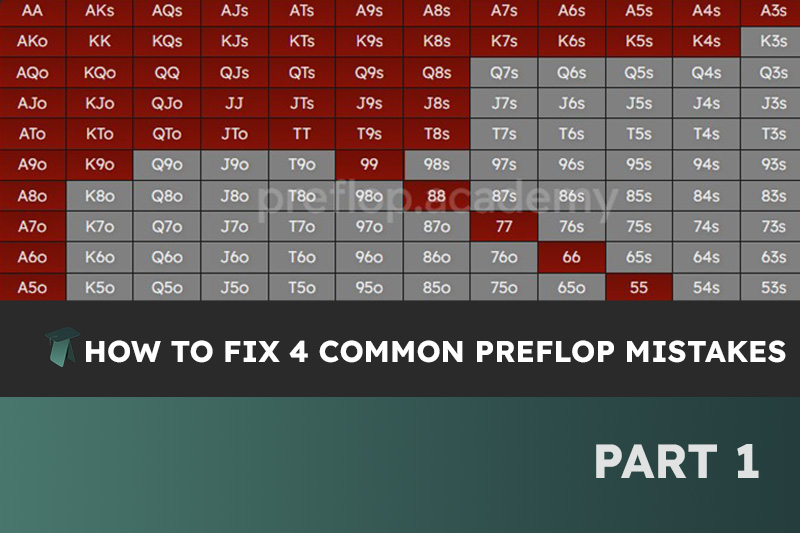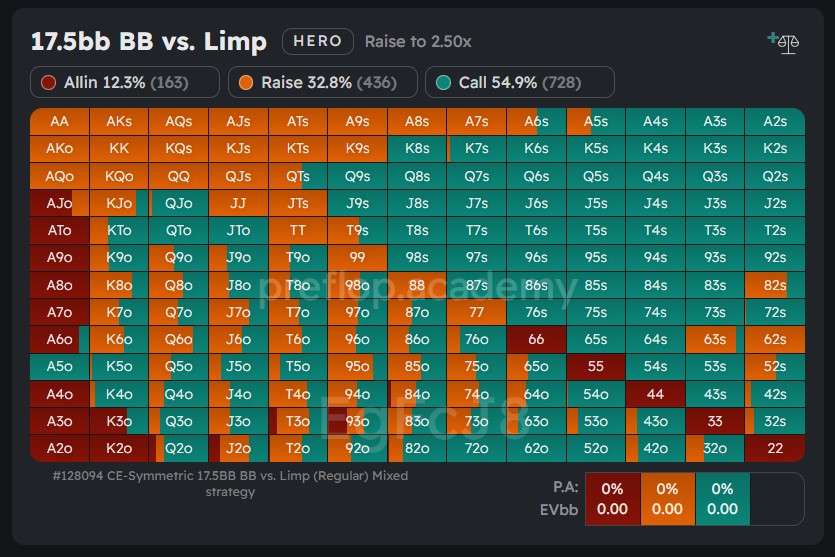A few months ago, Vlada Stojanovic conducted a training session for the Poker Academy. During his lecture, he talked about how to address common leaks in preflop play and improve our overall strategy with Poker Academy.
One of the key lessons was understanding the reasoning behind specific recommendations, which often involved comparing the ranges of two players. To illustrate this, let’s examine how Vlada analyzed each of the mistakes. Today we will focus on investigating two of them.
- Mistake 1 Going all-in too frequently as a BB vs SB open (20bb deep)
- Mistake 2 ISO/Fold too much vs limp (17,5bb deep)
Mistake 1. Going all-in too frequently as a BB vs SB open (20bb deep)
First, let’s examine this node.
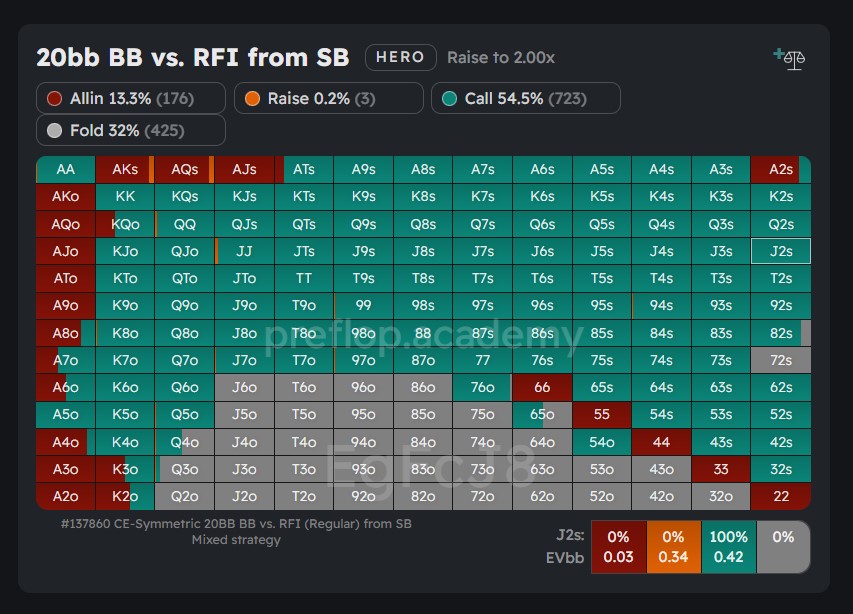
The chart provides us with valuable information on the range with which we should go all-in, revealing that it is a narrow range comprising only 13% of hands. However, rather than memorizing this chart, our focus is on understanding the underlying principles.
To achieve this understanding, it becomes crucial to examine the morphology of our opponent’s range. In the scenario mentioned, the opponent’s range appears highly polarized, indicating a strong inclination towards calling rather than going all-in.
Think about this. When facing a 3-bet all-in, the opponent will fold weaker hands and only continue with the top part of his range. Therefore, when playing with a wide range of mid-strength hands ourselves, it is often more advantageous for us to opt for a calling strategy and playing postflop with an advantage of being in position.
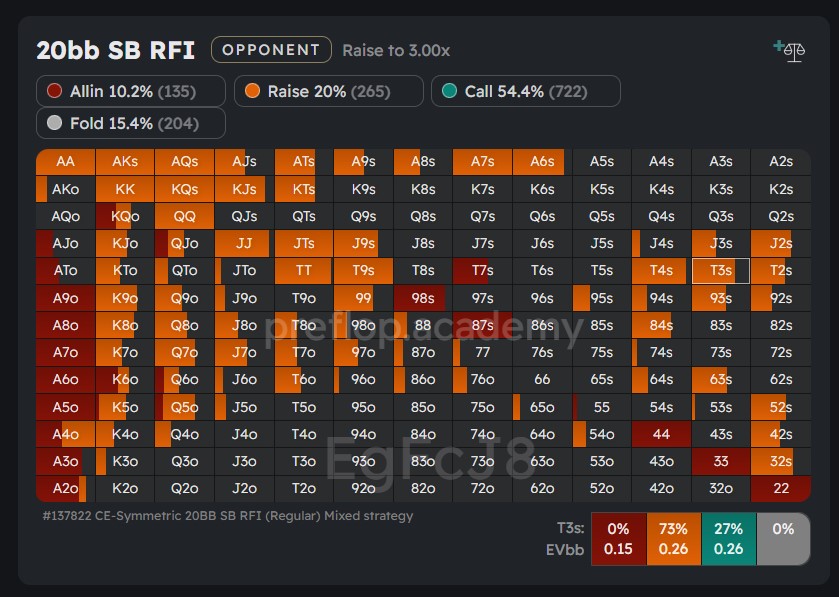
Especially when we are playing against weaker opposition, we want to play a strategy that leads to more nodes. So we prefer just calling and playing the pot in position. This strategy is going to outperform jamming – said Vlada.
Mistake 2. ISO/Fold too much vs limp (17,5 bb)
Limped pots BvB introduce a unique dynamic. When a player is in the BB, they have the option to check and fully realize their equity before the flop everytime they choose to. The opportunity to check and realize equity preflop arises because there is no initial raise from the small blind or other positions. This gives the BB a chance to see the flop without investing additional chips, maximizing their potential to capitalize on the hand’s equity.
Vlada emphasized during the training that inexperienced players often make mistakes in constructing their raising range in this specific scenario, resulting in a common tendency to fold when facing an all-in play.
We want to isolate a lot, but we need to make sure that we include enough strong hands in our range – said Vlada.
As usual, we are trying to understand what is going on, not to learn the chart readings by heart.
The ranges of both players are very wide. We have already seen our response to limp, now we can look at the range with which the rival is limping.
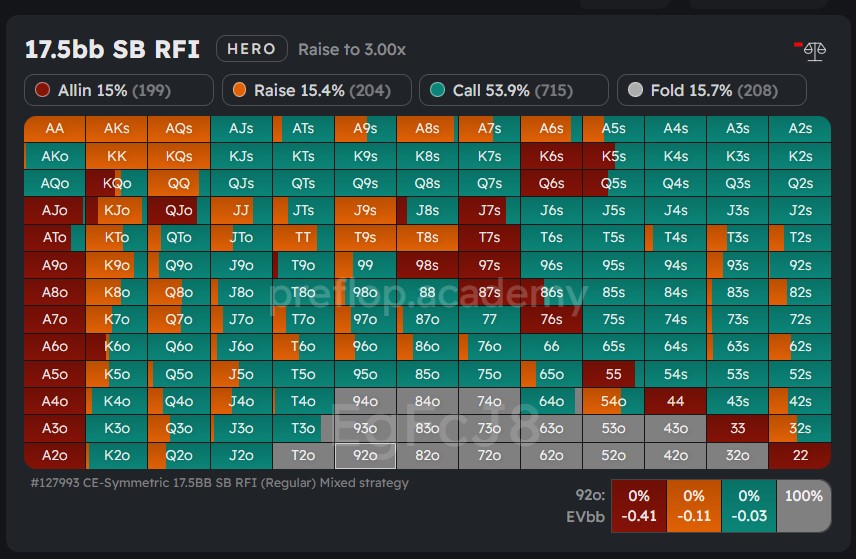
An optimally playing opponent in the small blind (SB) tends to limp around 54% of their range. This indicates that a significant portion of their range will fold to a raise. Consequently, the player in the big blind (BB) is motivated to construct their raising range in a way that achieves some pre-flop folds while also avoiding regret if they have to fold to an all-in jam.
When analyzing the hands, the BB player chooses to raise, we observe that they predominantly consist of offsuit hands. In most cases, the solver suggests a mixed strategy, where the expected value (EV) of both raising and checking options is the same.
On the other hand, with suited hands, the solver employs a combination of checking and raising, usually with the intention of raise-call. When holding a suited hand, we generally want to avoid a raise-fold strategy. This is because even seemingly weak hands, like 92s, benefit from positional advantage, equity realisation and the decent folding equity post-flop. By being suited, such hands possess enough playability to make us want to see community cards with them.
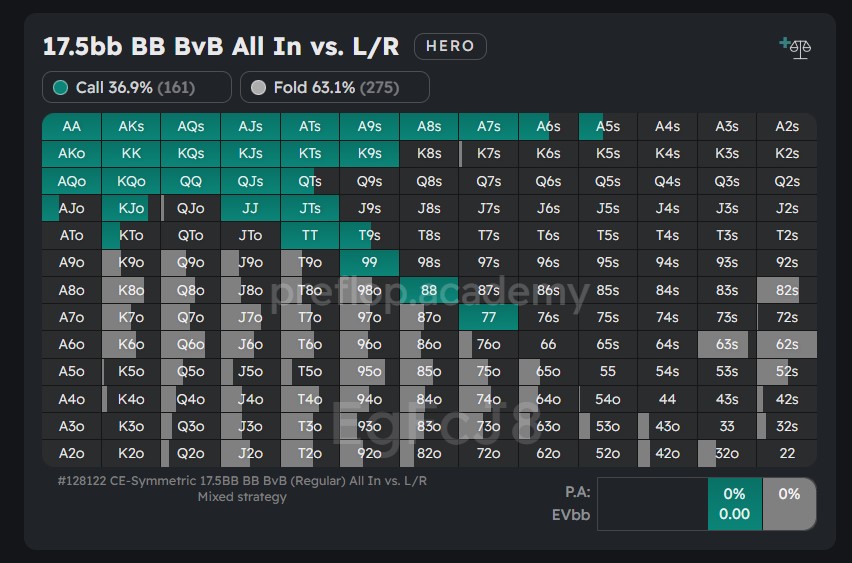
If we treat the AA-22 diagonal as the border between the ‘two worlds’, we can quickly see that the hands below mainly fold to all-ins and those above mostly call.
Summary
Describing the dynamics of a specific situation and understanding the relationships involved makes it much easier to grasp the optimal strategy. While it is not realistic for humans to play exactly like a solver, studying with the Poker Academy allows us to develop an intuitive sense for various scenarios.
By actively describing and analyzing the situation, we can gain a deeper understanding of the key factors and make more informed decisions regarding the construction of our range. Rather than relying solely on memorized information, we focus on comprehending the most important relationships within the game. This approach enables us to develop a strategic intuition and make better choices in real-time.
See you in part two.
